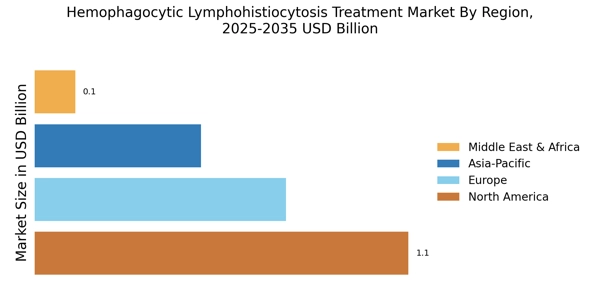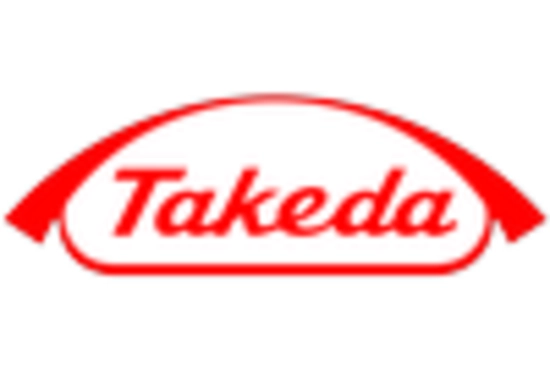Advancements in Diagnostic Techniques
Advancements in diagnostic techniques are significantly influencing the Hemophagocytic Lymphohistiocytosis Treatment Market. Enhanced diagnostic tools, such as next-generation sequencing and advanced imaging technologies, facilitate the early detection of HLH. These innovations enable healthcare providers to differentiate HLH from other similar conditions, which is crucial for timely intervention. The market for diagnostic tools is projected to grow at a compound annual growth rate of approximately 8% over the next few years. As diagnostic accuracy improves, the number of patients receiving appropriate treatment is likely to increase, thereby driving the overall market for HLH treatments.
Emergence of Novel Therapeutic Agents
The emergence of novel therapeutic agents is a significant driver for the Hemophagocytic Lymphohistiocytosis Treatment Market. Recent developments in drug formulations, including monoclonal antibodies and small molecule inhibitors, are showing promise in treating HLH. These innovative therapies are designed to target specific pathways involved in the disease process, potentially leading to better patient outcomes. The market for these agents is projected to expand, with several candidates currently in clinical trials. As these novel therapies receive regulatory approval, they are likely to transform the treatment landscape for HLH, thereby stimulating market growth and offering new hope for patients.
Growing Investment in Research and Development
Growing investment in research and development (R&D) is a pivotal driver for the Hemophagocytic Lymphohistiocytosis Treatment Market. Pharmaceutical companies and research institutions are increasingly focusing on developing novel therapies for HLH, including targeted therapies and biologics. This trend is supported by funding from both public and private sectors, which is essential for advancing clinical trials and bringing new treatments to market. The R&D expenditure in the hematology sector has seen a notable increase, with estimates suggesting a rise of over 15% in the last few years. This influx of investment is likely to yield innovative treatment options, enhancing patient outcomes and expanding market opportunities.
Increasing Incidence of Hemophagocytic Lymphohistiocytosis
The rising incidence of Hemophagocytic Lymphohistiocytosis (HLH) is a critical driver for the Hemophagocytic Lymphohistiocytosis Treatment Market. Recent studies indicate that HLH is increasingly recognized as a severe complication of various underlying conditions, including infections, malignancies, and autoimmune diseases. This growing awareness among healthcare professionals is likely to lead to earlier diagnosis and treatment, thereby expanding the market. The prevalence of HLH is estimated to be around 1 in 800,000 individuals, but this figure may be underreported due to misdiagnosis. As more cases are identified, the demand for effective treatment options is expected to surge, propelling the market forward.
Rising Awareness and Education Among Healthcare Professionals
Rising awareness and education among healthcare professionals regarding Hemophagocytic Lymphohistiocytosis is crucial for the growth of the Hemophagocytic Lymphohistiocytosis Treatment Market. Educational initiatives, workshops, and conferences are being organized to inform clinicians about the complexities of HLH, its symptoms, and treatment protocols. This increased knowledge is likely to lead to improved diagnosis rates and treatment adherence. As healthcare providers become more adept at recognizing HLH, the demand for effective treatment options is expected to rise. Furthermore, the establishment of specialized centers for HLH management is anticipated to enhance treatment accessibility, further propelling market growth.


















Leave a Comment